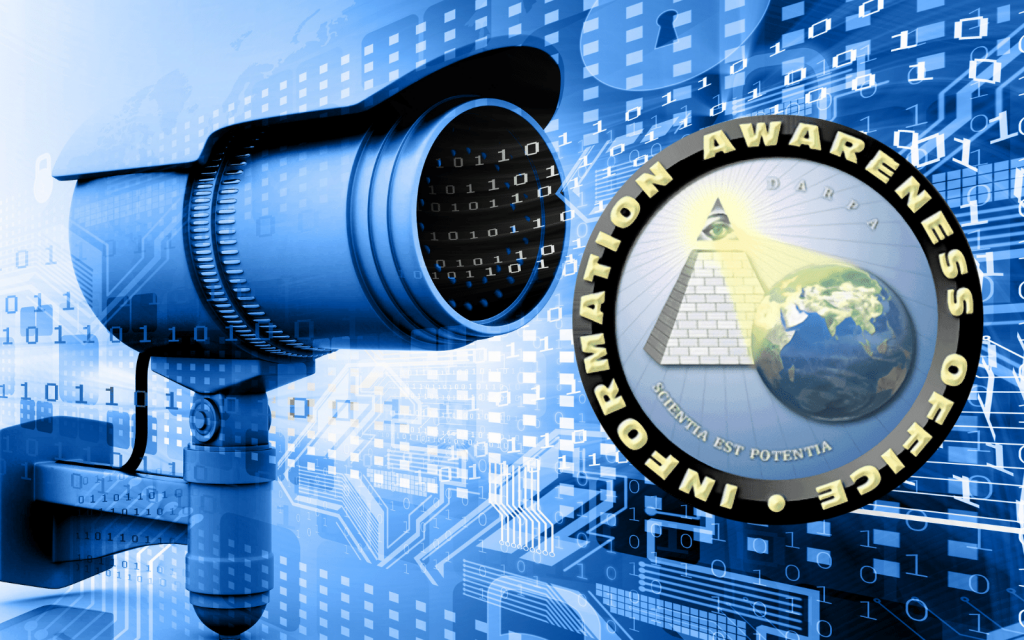DARPA (the Defense Advanced Research Projects Agency) frequently does all sorts of impressive — and terrifying — military things. But not every project is a winner. Or talked about. There were several technologies envisaged by the American government in the early 2000s. DARPA was supposed to work on the feasibility of these, as part of something called the Information Awareness Office (IAO).
The objective for these projects, given it was George Bush, Jr’s fledgling War on Oil-Containing Countries Terror™, was largely surveillance. And while the Information Awareness Office was officially canned after a year of existence, many of the technologies explored by the division actually made it into existence. The catch? They were officially developed by the private sector.
Babylon
Not to be confused with Project Babylon (which involves space-guns for Saddam Hussein), DARPA’s Babylon will seem very familiar today. In 2001, the project was intended to create a universal translator of sorts. The original idea was very much focused on America’s venture onto the Middle East (for various reasons that end in ‘oil’). The project was abandoned because it was 2002 and it just wasn’t possible to do this sort of thing yet. But while “deployment of speech and translation technologies on portable platforms in a military/diplomatic context” was abandoned, the actual technology wasn’t. It’s around today, as Google Translate. It doesn’t have the military focus that Babylon had (that we know of) but it functions almost as planned when it was first envisioned.
Communicator
 DARPA had a similar spoken-word program running at the same time as Babylon. Called Communicator, it hoped to create “multi-modal speech-enabled dialog systems with advanced conversational capabilities”. To translate it out of edumacated jargon, the agency wanted to create a speech-based system for soldiers to communicate with computers. Now, this one wasn’t explicitly created for America’s Afghanistan war. At least, since the project was in existence in 2000, it better not have been. Still, the project fell under IAO’s purview and actually got a fair way into development, being tested in the field. But you might be more familiar with Communicator in a much more modern context. Apple’s Siri, Google’s Assistant, Amazon’s Alexa, and basically any other voice control system is DARPA’s initiative, independently developed and sold to the world.
DARPA had a similar spoken-word program running at the same time as Babylon. Called Communicator, it hoped to create “multi-modal speech-enabled dialog systems with advanced conversational capabilities”. To translate it out of edumacated jargon, the agency wanted to create a speech-based system for soldiers to communicate with computers. Now, this one wasn’t explicitly created for America’s Afghanistan war. At least, since the project was in existence in 2000, it better not have been. Still, the project fell under IAO’s purview and actually got a fair way into development, being tested in the field. But you might be more familiar with Communicator in a much more modern context. Apple’s Siri, Google’s Assistant, Amazon’s Alexa, and basically any other voice control system is DARPA’s initiative, independently developed and sold to the world.
EARS
EARS, otherwise known as Effective Affordable Reusable Speech-to-text, is an example of Exactly What It Says on the Tin. DARPA was looking for a way to easily turn speech into text, going as far as to test English, Chinese (we assume it was Mandarin), and Arabic examples. Because war reasons, as far as the languages go. EARS lives on in projects by Google, Microsoft, and an entire dictation industry. It comes standard on a whole collection of common devices (like anything that runs Windows 10 or 11). It’s still prone to making mistakes, no matter how clearly you make your speech.
EELD
 EELD stands for Evidence Extraction and Link Discovery. The point was to automatically extract information from various online sources and compile it into a single descriptive bundle of information. The initial idea was to build profiles on potential threats, but we can’t seem to find out much about how far the project got. Or when it ended. But the technology certainly exists today in the real world. Facebook recently caught it in the neck over so-called shadow profiles. These are profiles of a specific person inferred by who or what they interact with online, without any direct tracking taking place. Sounds awfully familiar…
EELD stands for Evidence Extraction and Link Discovery. The point was to automatically extract information from various online sources and compile it into a single descriptive bundle of information. The initial idea was to build profiles on potential threats, but we can’t seem to find out much about how far the project got. Or when it ended. But the technology certainly exists today in the real world. Facebook recently caught it in the neck over so-called shadow profiles. These are profiles of a specific person inferred by who or what they interact with online, without any direct tracking taking place. Sounds awfully familiar…
Genisys
Genisys was a program intended to create “…technology for integrating terrorist threat databases and other information sources to support effective intelligence analysis aimed at preventing terrorist attacks on the citizens, institutions, and property of the United States”. It aimed to do this by making databases more effective and easy to use. Besides being the most boring project with a semi-nefarious purpose on DARPA’s list, it’s also survived well into the modern era. Modern data centres, including those owned by Equinix, China Telecom, CyrusOne, and a host of others, all conform to the original definition outlined by the developmental military institution.
Project Genoa II
Project Genoa II, later known as Topsail, was the successor to Genoa. Genoa II focused on “…providing means with which computers, software agents, policy makers, and field operatives could collaborate”. There is a range of technologies that fit this bill in the modern era. Most of Microsoft’s collaboration software is a suitable match. Google Docs, when paired with predictive assistance, also conforms to this definition. And there might be a properly military application as well. Work on Genoa II was shifted from DARPA to the Advanced Research and Development Agency. ARPA was renamed the Disruptive Technology Office, before being merged with the Intelligence Advanced Research Projects Activity (IARPA) in 2007. There’s no sign that Genoa II was ever abandoned.
Human ID at a Distance
 Another unimaginatively named surveillance technology, Human ID at a Distance planned to identify humans. At a distance. Its goal was to use a combination of biometric factors to identify people at a distance of up to 150 metres. Those factors? That would be gait recognition, a technology that isn’t really used outside of government and law enforcement. Other factors included iris recognition, which was in vogue in smartphones from about 2015 until the rise of facial recognition. And the other major one was facial recognition, which anyone who owns a moderately-priced smartphone currently volunteers to use on a daily basis. But don’t worry, your facial biometrics are safe with the people you’ve handed it to. Promise. /s
Another unimaginatively named surveillance technology, Human ID at a Distance planned to identify humans. At a distance. Its goal was to use a combination of biometric factors to identify people at a distance of up to 150 metres. Those factors? That would be gait recognition, a technology that isn’t really used outside of government and law enforcement. Other factors included iris recognition, which was in vogue in smartphones from about 2015 until the rise of facial recognition. And the other major one was facial recognition, which anyone who owns a moderately-priced smartphone currently volunteers to use on a daily basis. But don’t worry, your facial biometrics are safe with the people you’ve handed it to. Promise. /s
TIDES
TIDES stands for Translingual Information Detection, Extraction, and Summarization. We opted for the acronym here because the next one… the next one is a doozy. TIDES isn’t all that nasty. It’s another audio technology, not unlike EARS or Communicator. This one was focused mostly on creating brief, intelligible summaries from foreign languages that the user was completely unfamiliar with. There isn’t a direct analogue to this one floating around in the real world at present, but auto-translation applications can perform largely similar functions. The only thing missing is the ‘Summarization’ part of the whole equation.
Total Information Awareness
This was the big one. The ambitious one. The one that would have heralded American supremacy over all enemies, ever. Thoughtcrime would have been eliminated, the ‘war’ would have been won in record time, and all you had to do was hand over everything you’ll ever do and ever will for analysis. Total Information Awareness (TIA) was the end goal of DARPA’s Information Awareness Office. Yes, the logo at the top of the page is completely real. So is the motto — “Knowledge is Power.” It hoped to bring all of the technologies above under a single banner, using that to monitor every person in the United States. All of their personal information would be collected in a single, searchable location where it could be dissected and assessed.
The office was eventually defunded, due to fears of the mass surveillance it would enable. There are only a handful of entities on the planet who currently come close to fitting the definition of the Total Information Awareness program. The prime mover, in part because it’s fairly open about its data collection, is none other than Meta. Google runs a close second for the information it holds about people around the world. TIA entailed access to “…personal e-mails, social networks, credit card records, phone calls, medical records, and numerous other sources, without any requirement for a search warrant.” Sounds like most major Big Data players. Closer to home, medical aid and insurance provider Discovery may fit the bill the best.




